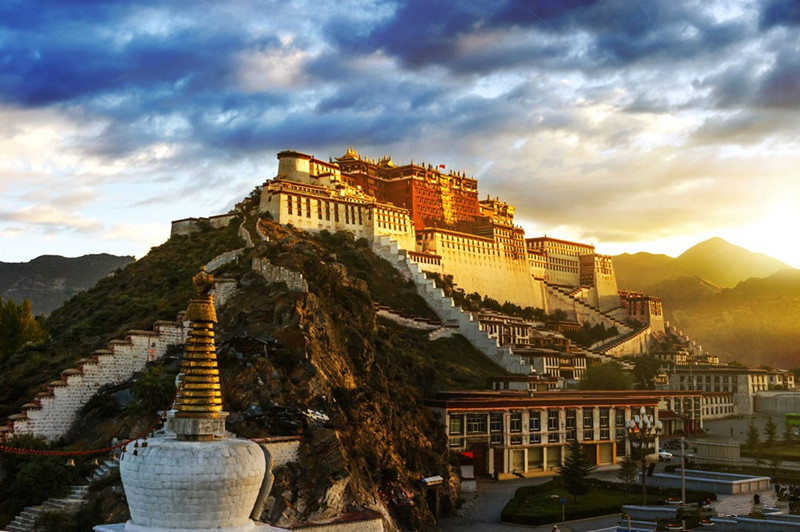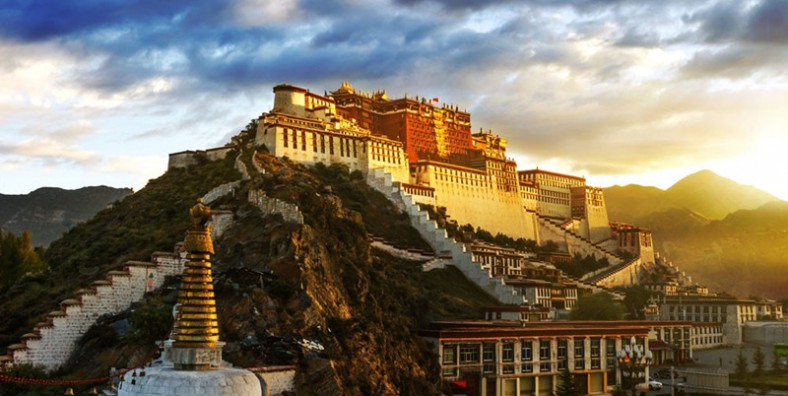
Historic Ensemble of the Potala Palace, Lhasa
Historic Ensemble of the Potala Palace in Lhasa, Tibet, is a UNESCO World Heritage site recognized for its outstanding cultural and architectural significance. The Potala Palace, built in the 17th century under the patronage of the Dalai Lama, stands as a symbol of Tibetan Buddhism and Tibetan civilization.
Key features of the Potala Palace include its imposing structure, which rises majestically above the Lhasa valley, and its unique blend of Tibetan, Han Chinese, and Indian architectural styles. The palace complex comprises various halls, chapels, and residential quarters, all adorned with intricate artwork, religious artifacts, and historical treasures.
The Historic Ensemble of the Potala Palace in Lhasa, Tibet, encompasses three significant sites: the Potala Palace, Jokhang Temple Monastery, and Norbulingka. This ensemble represents Tibetan Buddhism’s spiritual and administrative centrality and features remarkable architectural and artistic achievements.

- Potala Palace: Serving as the winter residence of the Dalai Lama since the 7th century, the Potala Palace is situated on Red Mountain, commanding the Lhasa Valley. The complex consists of the White and Red Palaces, with ornate halls, ceremonial spaces, and living quarters adorned with exquisite murals, sculptures, and religious artifacts.
- Jokhang Temple Monastery: Established in the 7th century to promote Buddhism, the Jokhang Temple Monastery is located in the heart of Lhasa. Its buildings, constructed of wood and stone, blend Tibetan, Chinese, Indian, and Nepalese architectural styles. The temple houses thousands of Buddha images, historical figures, and valuable manuscripts, with mural paintings depicting religious and historical scenes adorning its walls.
- Norbulingka: Constructed in the 18th century as the Dalai Lama’s summer residence, Norbulingka lies along the Lhasa River. Spread across lush grounds, it features palace complexes, monasteries, and pavilions integrated into a sprawling garden landscape. Norbulingka served as a retreat for contemplation and played a role in political affairs.
The ensemble reflects the administrative, religious, and symbolic functions of the Tibetan theocratic government. Its architectural magnificence, intricate ornamentation, and harmonious integration with the landscape underscore its Outstanding Universal Value.
Key Criteria for Outstanding Universal Value:
- Criterion (i): The ensemble’s design, decoration, and landscape integration exemplify human creativity and architectural prowess.
- Criterion (iv): The Potala Palace, with its grandeur and cultural wealth, epitomizes Tibetan architecture and theocratic governance.
- Criterion (vi): Symbolizing the fusion of secular and religious authority, the ensemble holds exceptional significance.

Protection and Management: Designated as State Priority Protected Sites, the ensemble benefits from robust legal safeguards and conservation initiatives. Strict regulations govern interventions, and comprehensive management plans ensure sustainable preservation and visitor management.
















